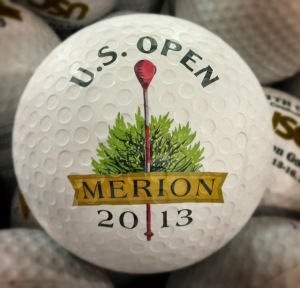How Did Merion Hold Up So Well?
/Merion was soft and yet scores weren't low.
The theories range from playing long, to greens remaining firm, to hole locations in the back of greens, to local knowledge, to the difficulty of the weather and even the shaggier fairways. Or maybe all of the above?
Rickie Fowler after his opening 70:
There's some nasty rough out there. It is short on the card, and it was playing soft today, which makes it play longer. I actually think this course plays more like a 7400 or 7500 yard golf course just because of you have the stretch from 7 through 13, besides the fact that No. 9 being a long par‑3.
Other than that, some very short holes. Which if you made those regular length, it's going to add up the scorecard closer to 7400 or 7500 yards.
 Jerry Kelly explains the hole location issue:
Jerry Kelly explains the hole location issue:
Q. There was soft conditions today, a little‑to‑no breeze at times, how surprising is it that 9‑under is leading right now and guys aren't going low?
JERRY KELLY: You saw where they put the pins, didn't you? Every single one of them was in the back. You can't get to them on soft greens. So you can hit pitching wedges and irons from 80 yards, but you're not going to do that. You're just going to knock it up there and if it spins back, it spins back.
So it was a little deceiving thinking, oh, we had easy pins in the back back there. No. Those are very hard when the course is playing a little shorter.
And Ron Sirak sums up the variety of elements that made Merion so tough on day one, including the bizarre flow to the rounds for players before they were delayed for several hours.
And then there are the mechanics required to stage the Open at this golf course. Not only was there the three-and-a-half hour delay on Thursday, but the locker room and practice range are on the West Course, about a mile from the tournament East Course.











